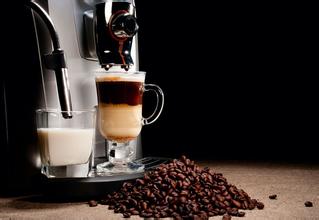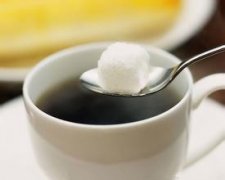Coffee roasting causes coking of raw coffee beans at high temperature.

Coffee roasting is the coking of raw coffee beans at high temperature. Roasting completely changes the substances inside the raw beans to produce new compounds, which are recombined to form aroma and mellow flavor. And this effect will only happen at high temperature, if you only use low temperature, it will not cause decomposition, no matter how long the coffee beans are not cooked.
Most people think that baking is nothing but cooking raw beans with fire. In fact, roasting is the most difficult step in the processing of coffee. It is a kind of science as well as an art. So experienced bakers in Europe and the United States enjoy a highly respected status.
Baking can be divided into three stages: drying, high temperature decomposition and cooling.
1. Drying (ie dehydration).
This stage accounts for half of the entire baking process.
At the initial stage of dehydration, the raw beans begin to absorb heat, the internal water gradually evaporates, the color gradually changes from cyan to yellow or light brown, the silver skin begins to fall off, and a faint smell of grass can be smelled.
The main function of this stage is to remove the moisture from the raw coffee beans and control the temperature to indirectly control the uniform dehydration so that it will not evaporate too quickly so as to avoid scorching and blackening.
two。 High temperature decomposition
When roasted to about 160 degrees Celsius, the water inside the coffee bean will evaporate into gas and begin to rush out of the outside of the coffee bean.
At this time, the interior of the bean will change from endothermic to exothermic, and will burst for the first time. It turns to endothermic after an explosion, and the pressure inside the coffee bean is extremely high, reaching 25 atmospheres. High temperature and pressure began to deconstruct the original tissue to form new compounds, creating the taste and taste of coffee, reaching about 190 degrees, the conversion between endothermic and exothermic action will occur again, so the second burst, the second explosion. Coffee beans change from brown to dark brown and gradually enter the stage of re-baking.
3. Cooling
Coffee must be cooled immediately after roasting, quickly stop the high temperature cracking and lock the flavor, otherwise the high temperature inside the beans will continue to work and will burn off the aromatic substances.
There are two cooling methods, one is air-cooled and the other is water-cooled.
● air cooled type
The air-cooled type requires a lot of cold air to cool the coffee beans quickly within 3 to 5 minutes. in the field of professional baking, the roaster has a trailer and a rotatable push arm in the trailer. When the baking is finished, the beans are automatically sent to the trailer, which starts the fan at the bottom, blows the cold air, and stirs the coffee beans by the pushing arm to cool down. The air-cooled type is slow but clean and non-polluting, and can better retain the aroma of coffee. This kind of machine is used by selected coffee industry.
● water-cooled type
The water-cooled method is to spray a layer of water mist on the surface of coffee beans to let the temperature drop rapidly. Because the amount of water sprayed is very important, it requires precise calculation and control, and it will increase the weight of coffee beans, which belongs to the general large-scale commercial coffee roasting.
Important Notice :
前街咖啡 FrontStreet Coffee has moved to new addredd:
FrontStreet Coffee Address: 315,Donghua East Road,GuangZhou
Tel:020 38364473
- Prev

Coffee roasting knowledge types and stages of roasting
[the concept of roasting] roasting is the boiling of coffee beans, creating the unique color (amber), flavor and aroma of coffee. Roasting turns the light green raw coffee beans into the tea-brown coffee beans we are familiar with. High-standard fried roasting refers to the ingenious expression of the aroma, sour and bitter taste of raw coffee beans. [basic principles of baking] the most important thing is to be able to make beans
- Next

Roasting of coffee beans and basic knowledge of mixed coffee beans
When high-quality coffee beans are picked, the most important step in making them gourmet coffee is roasting and mixing. A master baker must have both the temperament of an artist and the rigor of a scientist. Only in this way can we ensure that the sugars and other carbohydrates contained in the coffee are carbonized during the roasting process, thus producing the well-known coffee fat and producing good coffee with high quality and consistent style.
Related
- Beginners will see the "Coffee pull flower" guide!
- What is the difference between ice blog purified milk and ordinary milk coffee?
- Why is the Philippines the largest producer of crops in Liberia?
- For coffee extraction, should the fine powder be retained?
- How does extracted espresso fill pressed powder? How much strength does it take to press the powder?
- How to make jasmine cold extract coffee? Is the jasmine + latte good?
- Will this little toy really make the coffee taste better? How does Lily Drip affect coffee extraction?
- Will the action of slapping the filter cup also affect coffee extraction?
- What's the difference between powder-to-water ratio and powder-to-liquid ratio?
- What is the Ethiopian local species? What does it have to do with Heirloom native species?

